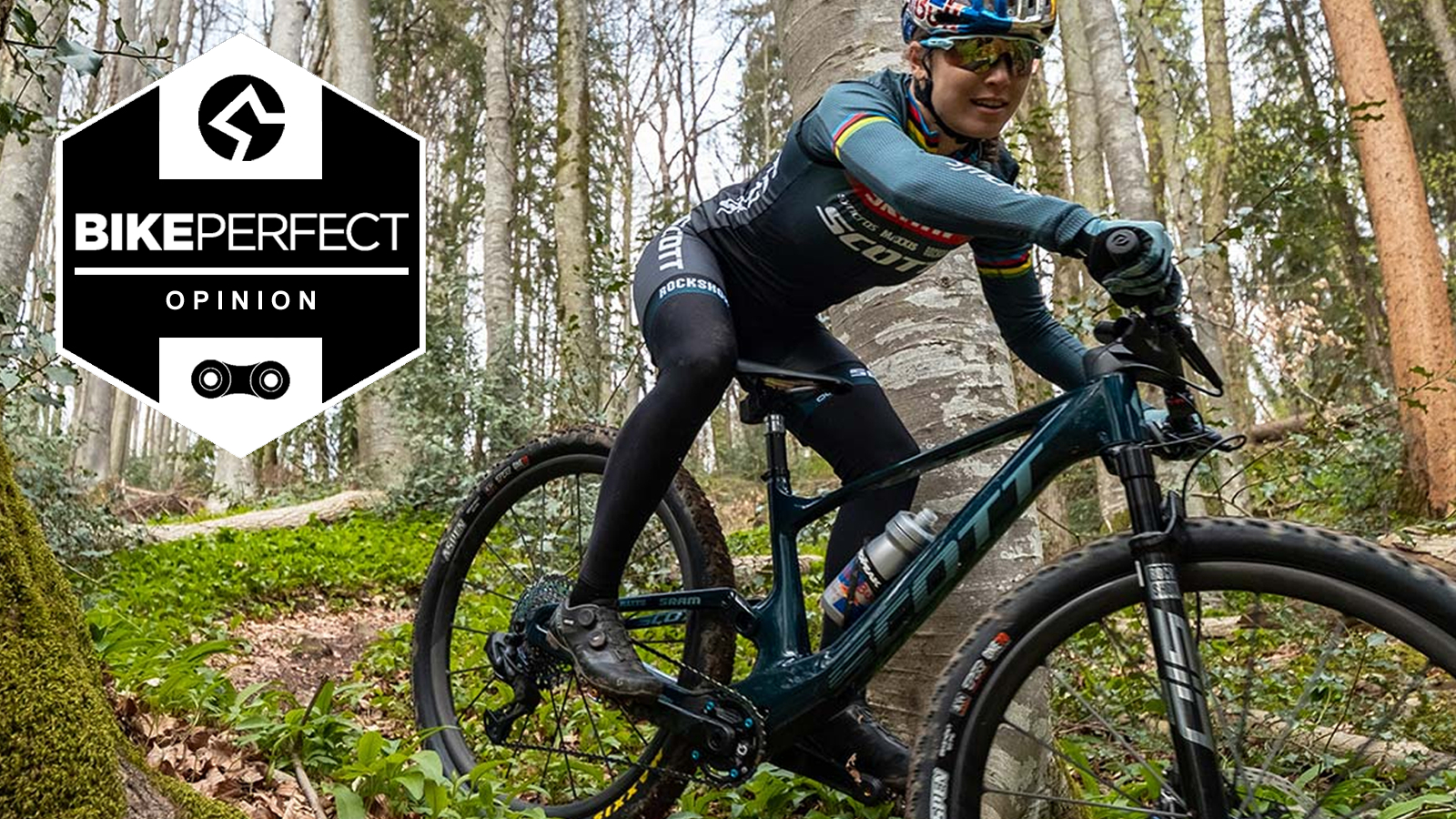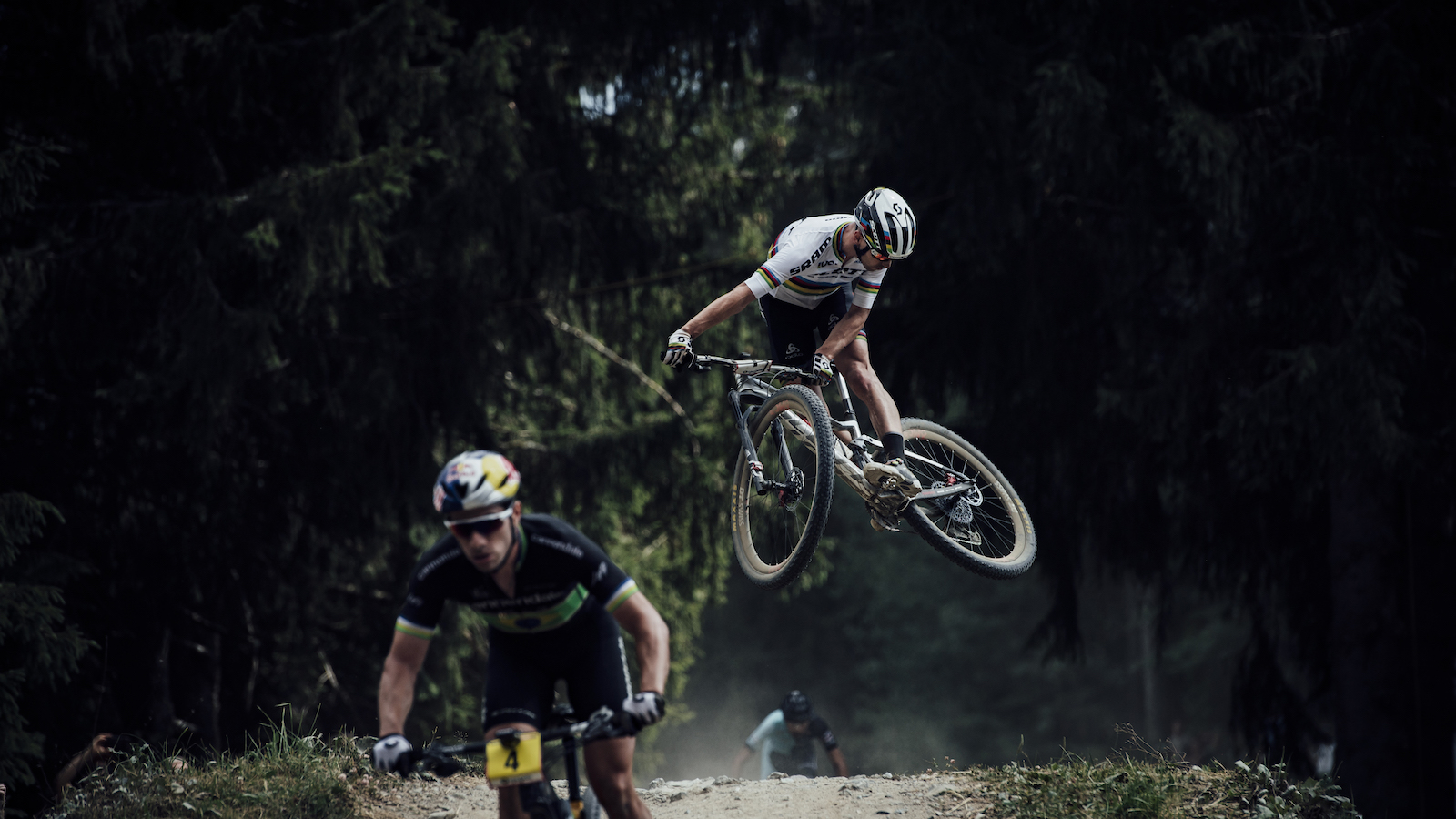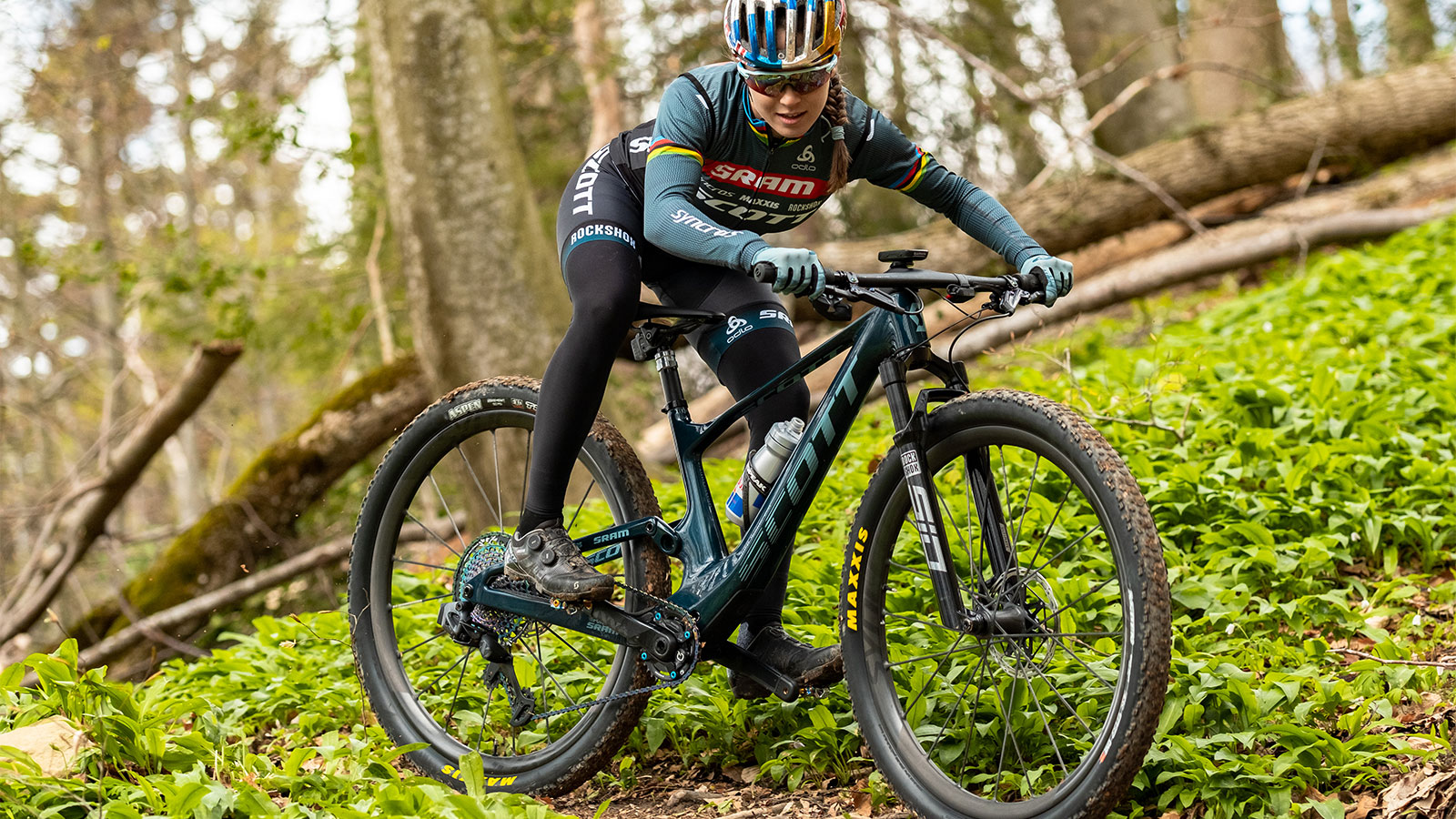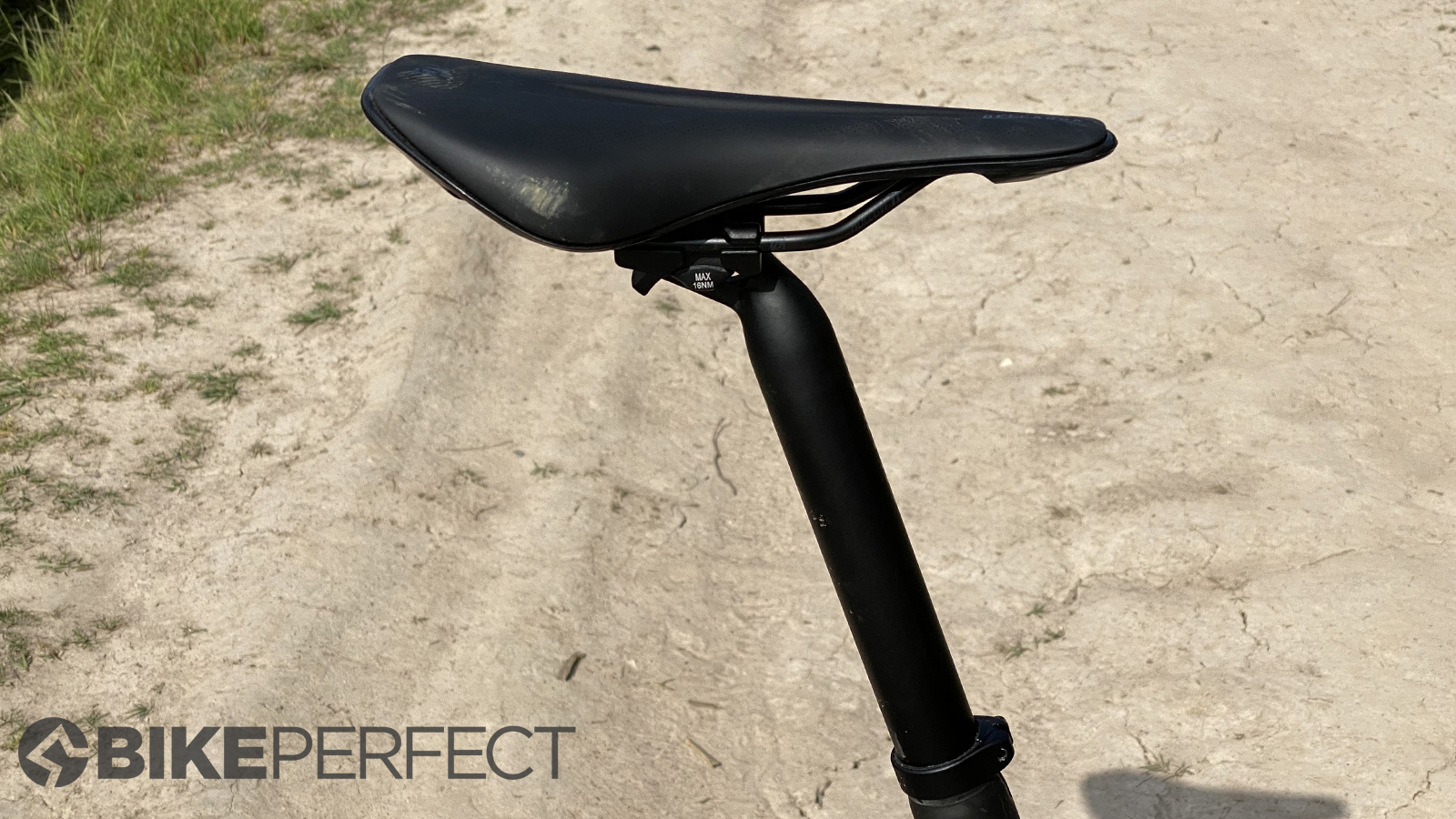Bespoken Word: Drop it like it’s hot
Should a modern cross-country race bike always have a dropper post and should that be reflected in review scores we give? Guy Kesteven explores the pros and cons

The best dropper posts have become a staple for many riders and racers the world over but is it a necessary evil and, more importantly, does it give you an advantage when things get really steep? In the name of properly informed testing I’ve been talking to my high-performance homies to check the vibe between the tapes, not just assume what’s whack on the race track.
Being an opinionated arse is obviously a massive part of the bike/kit testing game. After all, you have to be pretty arrogant to stick your neck out and publish commendations and condemnations of bikes and parts that whole teams of people have spent years working on and sometimes invested huge amounts of money in. To do a proper job of reviewing though you need to not just be a megalomaniac with a demented sense of self-righteousness you also need to have some empathy.
Mainly for other potential users of the product, you’re reviewing, but also sometimes for the people making and designing the thing. And that’s what I’m talking about this week.
- Cross-country mountain biking: everything you need to know
- Trail mountain biking: everything you need to know
So the bike in question is Scott’s new Spark RC Team Issue AXS but it could be a whole number of race bikes that stick with a fixed ‘high’ post rather than fitting a dropper as standard. The Spark is particularly interesting though because it’s a perfect example of the best full-suspension mountain bike recipe. It's modern in every sense and because it’s been designed and specced using the experience of several of the world’s most experienced racers including eight-time World Champion Nino Schurter and legendary racer and now Scott team manager Thomas Frischknecht.

Despite being known for regularly whipping jumps and showboating techy sections and having the option of a wireless SRAM AXS Reverb to match his other SRAM AXS transmission components Schurter rarely uses a dropper post. Like most pro racers he also likes to flip his stem for an ultra-low front end and actually took a while to be persuaded onto 29er wheels until Scott managed to get the bar height low enough. However, things get a bit weird as rather than going for the lightest, narrowest mountain bike tires and wheels and as little suspension travel as possible (which his bar and post choices might suggest) he also uses wide internal rims, 2.4in tires and favors longer travel. Which is why the new Spark is 120mm travel even in the RC race format. And he does all of those things because his testing - and he does a lot - tells him it’s faster.
Given that the Team Issue AXS gets a replica team livery with color flip paint and neon graphics, it’s perhaps no surprise then that it also has a Schurter-style fat tire/rim wheelset, flipped stem flat-bar cockpit and fixed seat post. In other words, if you want to look like Nino - and a whole ton of people, particularly in Europe do - then they’ve absolutely nailed the spec.
However, not only do the four more expensive bikes in the RC lineup all get dropper posts (the cheaper ones don’t) but for me personally, I really struggled without a dropper when testing. In fact, I didn’t get anywhere near the full potential of the Spark’s increased tire and suspension control until I stuck a cheap and cheerful (Decathlon, £100, about six years ago to be exact) seat-grab dropper post in. As a result, after chatting with our editor Aaron Borrill - who’s an absolute Absa Cape Epic stage race crushing race weapon - we ended up docking the Spark half a point from an otherwise perfect five. But did we do the right thing?

As I said at the beginning, having empathy with the potential user/target audience is vital to accurate testing. And the results of a quick social media survey of my ‘more Lycra, less peak’ pals were very interesting. Helping me feel a whole lot better about my scoring were the couldn’t-ride-without-a-dropper-now crowd who confirmed just how much more confidently/quickly they could descend/corner without a saddle up their butt. They also added interesting side notes about it being less awkward to collapse off the bike on mega marathon rides with a dropper post. Something I’ve already had chats with other riders about and even coined the phrase ‘Pensioner post’ for the ease of getting on and off when you’re not as limber as you used to be. Interestingly, while most of these ‘dropper racers’ were happy with 100mm stroke and some even taped their posts to limit drop, they also enthused about being able to drop the saddle slightly for technical climbs and fast corners. Something I’m going to have to try and which could create an issue with ‘binary’ up or down lightweight race posts such as Fox’s new Transfer SL.
What surprised me though was how many riders didn’t use dropper posts and their varied reasonings were very interesting too. For some, it was a simple price or weight issue and that certainly chimes with the Scott. Even the XL in the Team AXS sneaks under the significant 12kg mark but if you fit a dropper most sizes won’t. It’s also very good value even compared to online-only bikes such as Canyon’s Lux but part of that is the lack of dropper spend. Other riders had been tempted to try a dropper but were worried about losing the extra control of being able to steady the bike by gripping the saddle between their thighs. To be honest, I think these folks would soon be converted by the extra dynamic movement of fitting a dropper compared to thigh-clamping terror, but then it’s weird how many racers still spend hours a week honing their aerobic fitness but are happy to say “Well I’m not very good on descents anyway”. I’m not going to complain though as on the rare occasions I do race, catching head-down arse-up saddle clenchers is the only time I actually get to feel good about myself.
But then there were another few race responders where it was a case of high horses for courses. Or to put it a less convoluted way they had droppers on race bikes but never used them. Or had tried them and didn’t like the sensation, even though they had droppers which they did use on their trail/enduro bikes. I have to say that really baffles me, but then the whole joy of mountain biking - and the challenge of reviewing - comes from accepting that there are many ways to enjoy rattling around on a bicycle off-road. That said, the majority opinion isn’t necessarily the right one for everyone, it’s just the right one for most.
- Types of mountain bikes: all the different mountain bike categories explained
- Best enduro mountain bike: carbon and alloy enduro bikes for all skill sets

Talking to Scott on the subject, there are some other issues to consider as well. The biggest one is perhaps - unsurprisingly - is product supply. With the entire bike world scraping the barrel for suitable componentry that they can get in under two years, opting for a fixed post in a conventional size saves a serious headache compared to fighting everyone else for a big order of the best dropper posts. We also need to point out that Scott has also made fitting your own dropper as easy as possible. The new frame is stiff enough elsewhere to allow them to drop its long-standing, but very rare 34.9mm seat post size down to a far more common 31.6mm diameter. As well as internal cable/hose space in the cunning stem, there’s also a threaded receiver on the TwinLoc shock remote to fix a dropper lever underneath, keeping the bar slightly less crowded and more intuitively ergonomic than an over-bar lever. Alternatively, if you win enough local races in high-post mode then you can invest the huge prize pot (yes, I am being deeply ironic here) in an AXS wireless operated post to match the rear mech. And again, being able to choose your favorite dropper/stroke/actuation tech/weight/one you already have - in the same way as choosing your favorite pedals - is a valid reason not to impose an arbitrary choice on the buyer.
- Best lightweight mountain bikes under 10kg
- Best budget dropper posts: lower saddles at lower prices
So were we wrong in docking the Spark half a point? Well, at some point we have to trust you, the review reader, to be able to take our opinions and add your own wisdom. If you’re a Nino superfan, you are on a tight price/weight budget or you like the security of a saddle between your thighs when descending (I still can’t understand that one to be honest) then, yes, we were wrong so go enjoy your perfect-as-Scott-provided Spark. For most riders, though, I still think that to get the phenomenal full potential out of the RC a ‘party post’ is still an upgrade we’d be making straight away and even a simple, short-travel unit (the old Scott/Syncros post was basically identical to the legendary bargain ‘Brand-X Ascend’ dropper from Chain Reaction) would have been enough to nudge that 4.5 to a perfect 5 out of 5.

Guy Kesteven has been working on Bike Perfect since its launch in 2019. He started writing and testing for bike mags in 1996. Since then he’s written several million words about several thousand test bikes and a ridiculous amount of riding gear. He’s also penned a handful of bike-related books and he reviews MTBs over on YouTube.
Current rides: Cervelo ZFS-5, Specialized Chisel, custom Nicolai enduro tandem, Landescape/Swallow custom gravel tandem
Height: 180cm
Weight: 69kg
